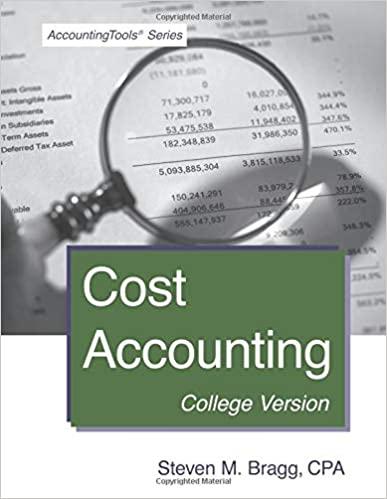Question
1. A company is planning to purchase 90,800 units of a particular itemin the year ahead. The item is purchased in boxes each containing 10units
1. A company is planning to purchase 90,800 units of a particular itemin the year ahead. The item is purchased in boxes each containing 10units of the item, at a price of $200 per box. A safety inventory of 250boxes is kept. The cost of holding an item in inventory for a year(including insurance, interest and space costs) is 15% of the purchaseprice. The cost of placing and receiving orders is to be estimated fromcost data collected relating to similar orders, where costs of $5,910were incurred on 30 orders. It should be assumed that ordering costschange in proportion to the number of orders placed. 2% should beadded to the above ordering costs to allow for inflation. Assume that usage of the item will be even over the year.
Determine the following:
a) The quantity that must be ordered to minimise total cost.
b) How often should the items be purchased?
2. A business has inventory of material A of 400 units valued at $2.50per unit September 1. During the month of September, themovements of material A were as follows:
September 5, issue 250 units at $5.00 per unit
September 10, receipt 500 units at $2.50 per unit
September 15, issue 340 units at $5.50 per unit
September 18, receipt 400 units at $2.70 per unit
September 27, issue 600 units at $6.50 per unit
a) Determine the cost of purchases, cost of issues, and the closingstock valuation using the FIFO method of stock valuation
b) If expenses for the month of September was $15,550, what isNet Income?
c) Identify three (3) features of the LIFO method stock valuation.
Step by Step Solution
There are 3 Steps involved in it
Step: 1

Get Instant Access to Expert-Tailored Solutions
See step-by-step solutions with expert insights and AI powered tools for academic success
Step: 2

Step: 3

Ace Your Homework with AI
Get the answers you need in no time with our AI-driven, step-by-step assistance
Get Started


